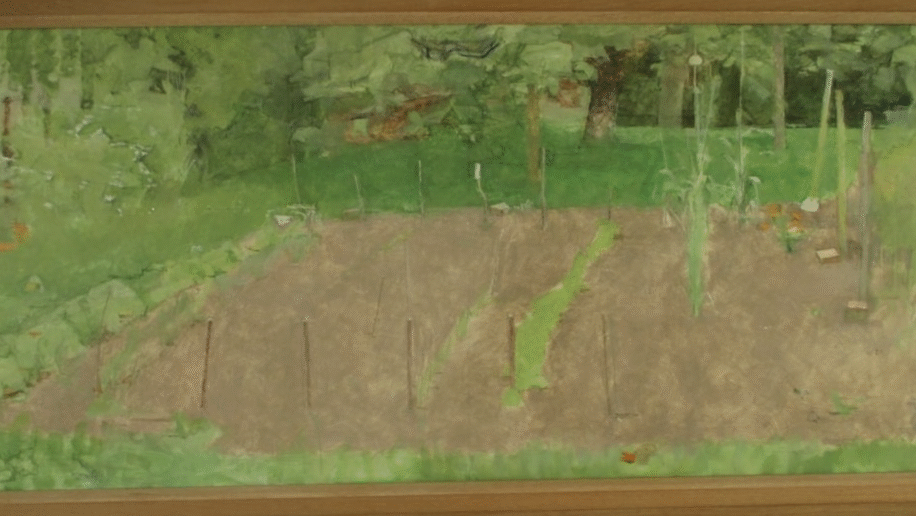Home > Collection > Mortlake Tapestry

Mortlake Tapestry
This important tapestry illustrates the month of March and the occupation of gardening. Traditionally this is the month when daylight hours become noticeably longer, and the spring equinox occurs and many gardeners start to plant out half-hardy seedlings and seed potatoes.
The Mortlake tapestry was made in around 1630 when the weaving workshop at Mortlake on the river Thames was producing the best tapestries in Europe. The tapestry depicts the month of March and is from a set celebrating different agricultural occupations across 12 months of the year, with the March scene celebrating gardening. The tapestry captures the essence of spring through blooming narcissus and buds on the fruit trees. The head gardener is shown doffing his cap to the landowners and introducing them to the delights of the garden whilst his wife is kneeling and planting seedlings. A number of undergardeners are depicted carrying out tasks around the garden such as digging new beds and tying plants into trellises.
The intentionality of this tapestry series is to display occupations – suggesting a professional status to the female’s role and as such it is a totally unique example of a woman gardening from the 17th century. She is finely clothed in a long-sleeved dress with puffs of material cinched into a bow at the shoulder and with ruffled cuffs at the wrists. She wears a finely decorated headdress decorated with quatrefoil flowers alternating in rows of blue and red. The other couple in the picture wear finer clothing and the other gardeners wear simple smocks depicting a variety of economic statuses. It is therefore likely to be a rare illustration of patron, head gardener and his wife and under-gardeners.
- Maker Mortlake Tapestry Workshop
- Material Wool and silk
- Object Type Art
- Year 1985
- Collection Number 2023.030
Related Objects

Portrait of a Black Gardener, Harold Gilman

Vegetable Garden, Patrick George

The Garden, Jean Cooke
